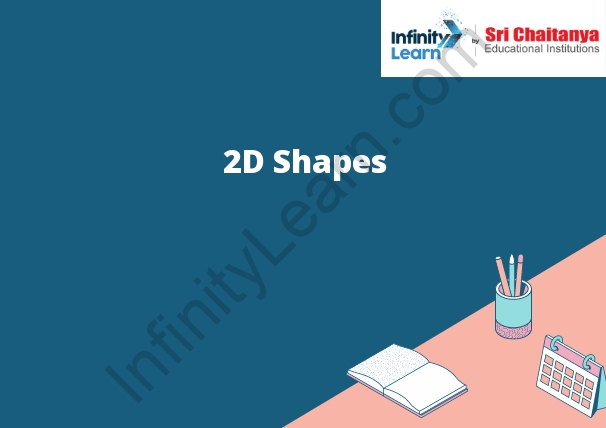Table of Contents
Introduction
2D shapes are flat, two-dimensional figures that are used in mathematics. They are the most basic shapes that can be used to construct a variety of other shapes. Some of the common examples of 2D shapes include circles, squares, triangles, rectangles, and hexagons. These shapes are also known as plane figures.
A circle is a round shape with no corners or edges. It is defined by a center point and a radius. Circles are used in many everyday objects such as clocks and wheels.

A square is a four-sided, flat shape with four equal sides and four right angles. It is a very common shape and is used in many everyday objects such as tiles, books, and windows.
A triangle is a three-sided shape with three straight sides. The sides of a triangle are not necessarily equal. Triangles are used in many everyday objects such as roofs and sailboats.
A rectangle is a four-sided shape with two pairs of equal sides. The sides of a rectangle are not necessarily equal. Rectangles are used in many everyday objects such as boxes and doors.
A hexagon is a six-sided shape with six equal sides. The sides of a hexagon are all equal. Hexagons are used in many everyday objects such as honeycomb cells and soccer balls.
2D shapes are a fundamental part of mathematics and are used in everyday objects. They are essential for constructing more complex shapes and understanding the world around us.
Properties of 2D Shapes
There are three properties of two-dimensional shapes:
- Area: The area of a shape is the measure of how much surface is covered by the shape. It is measured in square units.
- Perimeter: The perimeter of a shape is the measure of how much distance is covered by the shape’s boundary. It is measured in units of length.
- Shape: The shape of a shape is the outline or boundary of the shape.
What is 2D Shape?
A 2D shape is a two-dimensional object that has length and width but no height. Some examples of 2D shapes are squares, rectangles, circles, and triangles.
2D vs 3D Shapes
There are two types of shapes: 2D and 3D. A 2D shape is flat, and a 3D shape has depth. An example of a 2D shape is a square, and an example of a 3D shape is a cube.
Discovery of 2D shapes
- A triangle is a three-sided polygon.
- A square is a four-sided polygon with all sides equal in length.
- A rectangle is a four-sided polygon with two parallel sides of equal length.
- A rhombus is a four-sided polygon with all sides equal in length, but not all angles are equal.
- A parallelogram is a four-sided polygon with two parallel sides and two opposite sides that are equal in length.
Two Dimensional Shapes in A Coordinate System.
There are three types of two dimensional shapes in a coordinate system: points, lines, and planes. Points are the simplest type of shape and are represented by a single coordinate. Lines are represented by two coordinate points and planes are represented by three coordinate points.
2D Shapes Names
- 2-dimensional shapes are a fundamental part of mathematics. A 2-dimensional shape is simply a shape that has length and width, but no depth. There are a variety of different 2-dimensional shapes, and we use specific names to identify them.
- The most basic 2-dimensional shape is the point. A point is a shape with no width or length, just depth. Points are used in mathematics to represent positions in space.
- The next most basic 2-dimensional shape is the line. A line is a shape with length, but no width. Lines are used to measure distances between points.
- The next most basic 2-dimensional shape is the plane. A plane is a shape with both length and width. Planes are used to represent flat surfaces in space.
- There are a variety of other 2-dimensional shapes, including rectangles, squares, circles, and ellipses. Each of these shapes has specific properties that distinguish them from one another. For example, rectangles have four right angles, squares have four equal sides, circles have a curved surface, and ellipses have two different radii.
- Being able to identify and name different 2-dimensional shapes is an important part of mathematics. It enables us to communicate our ideas and thoughts effectively, and it helps us to better understand the world around us.
Curved Shapes
There are two types of curved shapes:
1. Closed curves: These are curves that have a beginning and an end.
2. Open curves: These are curves that don’t have a beginning or an end.
1) Circle
the correct word.
A. The moon orbits the Earth.
A. The Earth orbits the moon.
B. The moon rotates around the Earth.
B. The Earth rotates around the moon.
2) Ellipse
(3) Rectangle
(4) Triangle
(5) Trapezoid
(6) Square
Polygons
A polygon is a closed figure with straight sides. It is created by drawing line segments between two points, called the vertices, and then connecting the endpoints of the line segments.
1) Triangle (3 sides)
2) Rectangle (4 sides)
3) Square (4 sides)
4) Circle
2) Quadrilateral (4 sides)
3) Rectangle (4 sides, all right angles)
4) Square (4 sides, all right angles)
a) Square
b) Rectangle
c) Triangle
d) Circle
b) Rectangle
The area of a rectangle is found by multiplying the length by the width.
A = l × w
A = 120 × 20
A = 2400
3) Pentagon (5 sides)
4) Triangle (3 sides)
5) Square (4 sides)
4) Hexagon (6 sides)
A hexagon is a six-sided polygon.
5) Heptagon (7sides)
A heptagon is a seven-sided polygon.
4) Octagon (8 sides)
5) Hexagon (6 sides)
6) Square (4 sides)
7) Triangle (3 sides)
8) Pentagon (5 sides)
9) Rhombus (4 sides, equal length)









